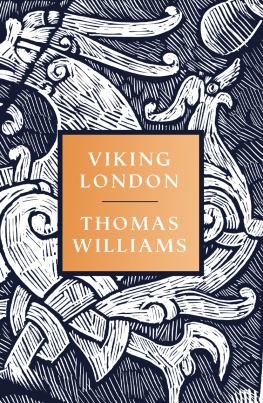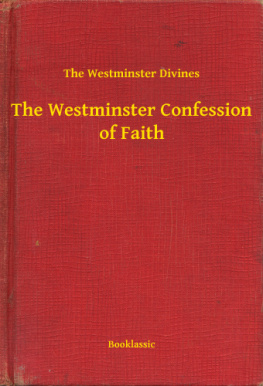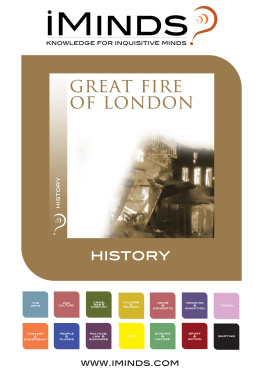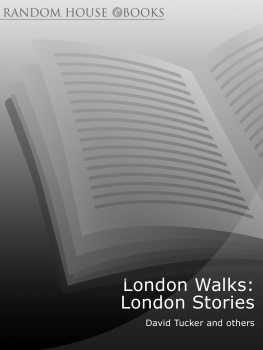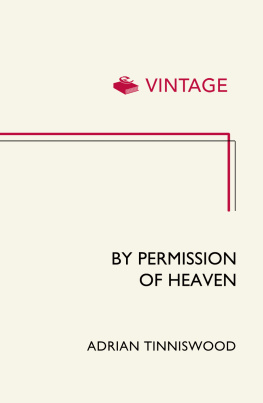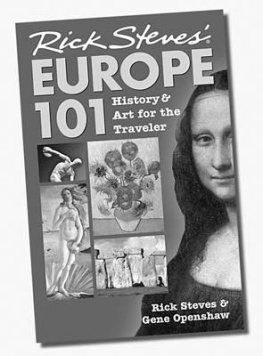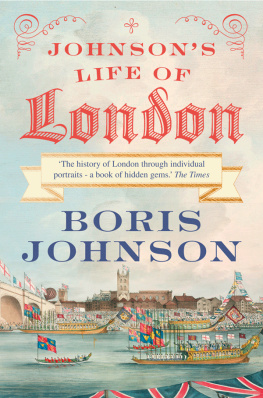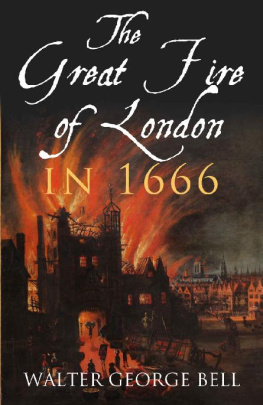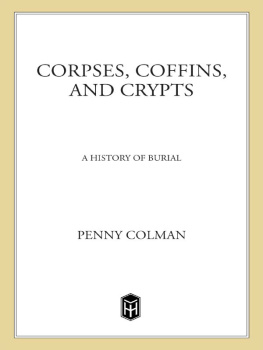With thanks and respect.
C ONTENTS
Christian faith emerged from the empty tomb and the early Christians, in great cities like Rome, often chose to hold their services in the catacombs. Most religions have offered an approach to the mystery of death, and part of what signals the evolution of human beings in the earliest times is evidence of care in the disposal of human remains.
Against this background, Malcolm Johnson has amassed some fascinating material on the eternal bedchambers; the crypts of the churches of the Cities of London and Westminster.
I vividly remember conducting a requiem at St Andrews Holborn on the occasion, described in this book, when the remains of centuries were reverently transferred from the crypt of the church to the City of London Cemetery. Despite visits over the past twenty years to many of the places described in this book, I learnt a very great deal that was new to me, and I imagine that Dr Johnsons work will prove a goldmine to local historians and the organisers of ghost tours for many years to come.
Our ancestors practised contemplation of their own mortality as a fruitful spiritual discipline and while Crypts of London is a significant contribution to social history, it is also a reminder that here we have no abiding city. Instead we look for The life of the world to come.
Richard Londin,
Bishop of London
2013
My grateful thanks to Richard, Bishop of London, for taking the time in the midst of his busy life to write the Foreword.
I owe a debt of gratitude to the late Miss Isobel Thornleys Bequest to the University of London which helped me financially to publish this book based on my PhD for Kings College, London. The photographs enhance it greatly, and I thank my friends Paul Thurtle, Kevin Kelly and Ian Brown for climbing over gravestones in cemeteries to take them. David Hoffman, a professional photographer, whose work for my homeless centre at Aldgate attracted much attention (and money), spent a day in the vaults of St Clement, King Square (by kind permission of Fr David Allen), and I find it difficult to thank him enough for some superb illustrations.
Dr Tony Trowles, Head of the Abbey Collection and Librarian, and Mr Jo Wisdom have kindly checked chapters 4 and 5 for me. My editors, Cate Ludlow and Ruth Boyes, have been supportive and patient with me and Stephen Green checked my grammar so I am grateful.
This book is dedicated to Professor Arthur Burns (my PhD supervisor) and to Dr Julian Litten. Both have guided and helped my research.
Introduction
Brookwood Cemetery (by permission of Brookwood Park Ltd; photographs by Paul Thurtle).
St Marylebone (courtesy of the rector and PCC)
St Martin-in-the-Fields (St Martins Archives courtesy of the vicar and PCC)
St Mary-le-Bow (by courtesy of the rector and PCC)
Christ Church Spitalfields
St Bride Fleet Street crypt (by permission of the rector and PCC; photographs by Stephanie Wolff)
All Hallows by the Tower (photographs courtesy of the vicar and PCC)
Westminster Abbey
Thomas Rowlandson (17571827) Death and the Antiquaries, 1816, aquatint (reproduced by kind permission of Derrick Chivers FSA).
St Pauls Cathedral (reproduced by permission of the Dean and Chapter)
St Botolph Aldgate
Three photographs of the crypt homeless centre (David Hoffman Photo Library).
St Helen Bishopsgate
St Clement King Square crypt (by kind permission of the vicar, Fr David Allen; David Hoffman Photo Library)
The east-west passage.
The same passage.
The north-south tunnel.
St Andrew Holborn crypt (photos by Russell Bowes, courtesy of the Venerable Lyle Dennen and Dan Gallagher)
St Luke, Old Street (courtesy of Oxford Archaeology)
St James Garlickhythe (by permission of the rector and PCC; photos by Ellis Charles Pike)
St Dunstan in the West crypt (by permission of the Revd William Gulliford; photos by Ian Brown)
All Hallows Lombard Street (by courtesy of the vicar and PCC, All Hallows Twickenham; photos by Joe Pendock)
St Clement Danes (photos by Alan Taylor)
Blocked crypt door.
St John Smith Square
Holy Trinity Minories (by permission of the rector of St Botolph Aldgate; David Hoffman Photo Library)
Six depositum plates taken from the Dartmouth family coffins in the crypt. Notes by Dr Julian Litten.
Repositories etc.
| BL | British Library |
| GL | Guildhall Library |
| HS | Harleian Society |
| LDF | London Diocesan Fund Archives |
| LMA | London Metropolitan Archives |
| LPL | Lambeth Palace Library |
| ODNB | Oxford Dictionary of National Biography |
| PP | Parliamentary Papers |
| TNA | The National Archives |
| UCL | University College London Library |
| WCA | Westminster City Archives |
Source types
| Br | Burial register |
| Ca | Churchwardens accounts |
| Tf | Table of burial fees |
| Vm | Vestry minutes |
Unless otherwise stated the place of publication is London.
Key
| [ * ] | Church still standing |
| [T] | Tower still stands |
| N.B. | Church or tower without symbol has been demolished |
The two cities of London and Westminster stank in the eighteenth and early nineteenth centuries. The Thames, full of sewage, flowed past streets covered in human and animal filth. Smoke from chimneys made the air more putrid. The word effluvium, a noxious exhalation affecting the sense of smell, appears regularly in the early nineteenth century when a few Londoners began to suspect that there might be a link between disease, destitution and foul smells. One of these was the smell of death, almost unknown in Britain today, since corpses are embalmed soon after death. Such a smell inevitably led back to the Anglican burial places of the two cities, which were either crypts full of rotting coffins or graveyards, where bones were dug up after twenty or more years. Worshippers knew that beneath their feet as they walked into church or sat in their pews lay the decomposing bodies of their forebears, but, unlike in France, no one proposed changes until the 1830s.
In the early eighteenth century the City of London possessed seventy churches with crypts, thirty-one of which no longer survive. Westminster has had twenty-five churches with crypts since 1666, and only six have been demolished or leased after the human remains have been removed. Rarely do the published histories of these buildings mention these undercrofts. Two exceptions are Westminster Abbey, whose tombs are described in chapter 4, and St Pauls Cathedral, whose crypt is described in chapter 5 (this relies heavily on a recent scholarly book). Two churches over the borders of the two cities Christ Church Spitalfields and St Luke Old Street are included because both have had the contents of their crypt removed, and thus provide valuable information. St Clement King Square is described because the incumbent has allowed me access.
Next page

